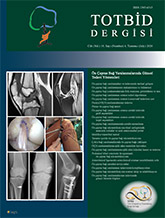
There has been rapid change and improvement in anterior cruciate ligament (ACL) during the past three decade. While transtibial (isometric, traditional) reconstruction has been popular in 90`s, double-bundle reconstruction has become widely used with the beginning of the new millennium; hence anatomic concept, instead of isometricity has been stressed. Following the popular era of anatomic double-bundle reconstruction, anatomic single-bundle has been used by some. Later on, the use of the double-bundle technique became less due to many studies indicating similar results between the two techniques. Soon after that, placement of the femoral tunnel became the main topic. As a result of many studies, anteromedial portal (independent drilling) technique became popular for this purpose. Meanwhile, some studies found that anatomic femoral tunnel placement was possible with some modifications in the transtibial technique (modified transtibial, anatomic transtibial), and lots of biomechanical and clinical studies came out indicating similar results. Parallel to these studies, the anatomy of ACL and insertion points were re-discovered. The importance of reconstructing the direct fibers were emphasized, and thus anatomic femoral tunnel location was defined as being more superior (knee in 90 degrees of flexion). The author obtains anatomic femoral tunnel by starting the tibial tunnel more medially, and by rotating the transtibial guide laterally on lateral condylar wall.